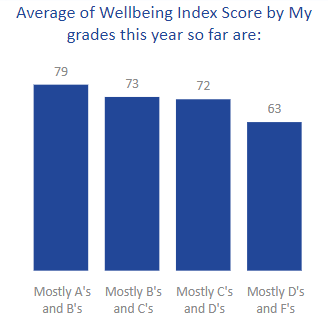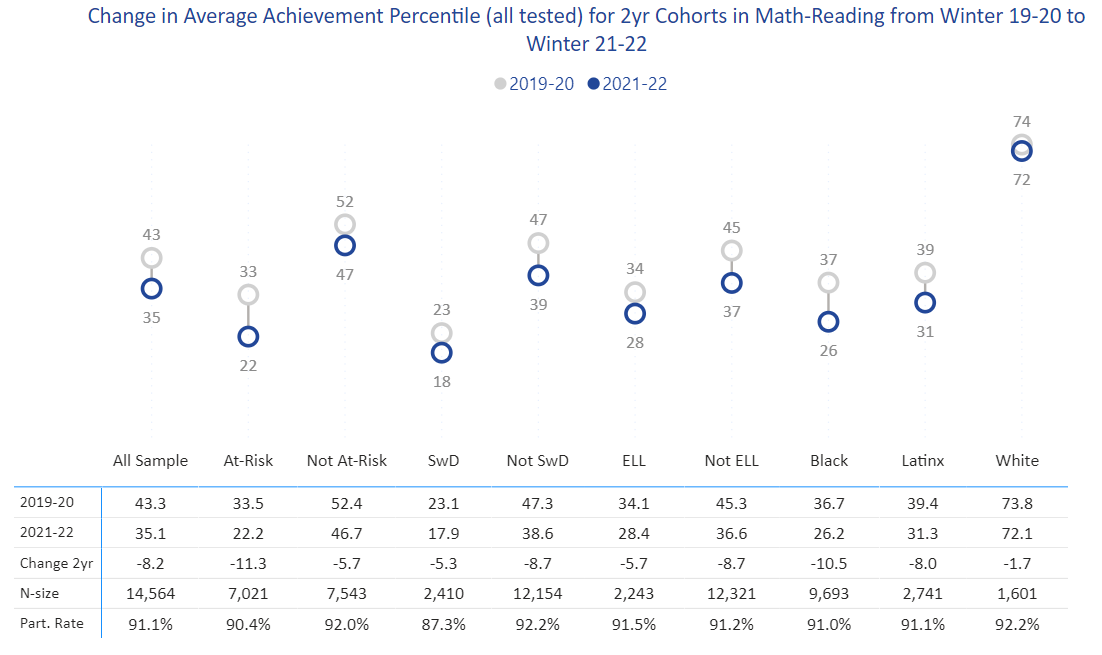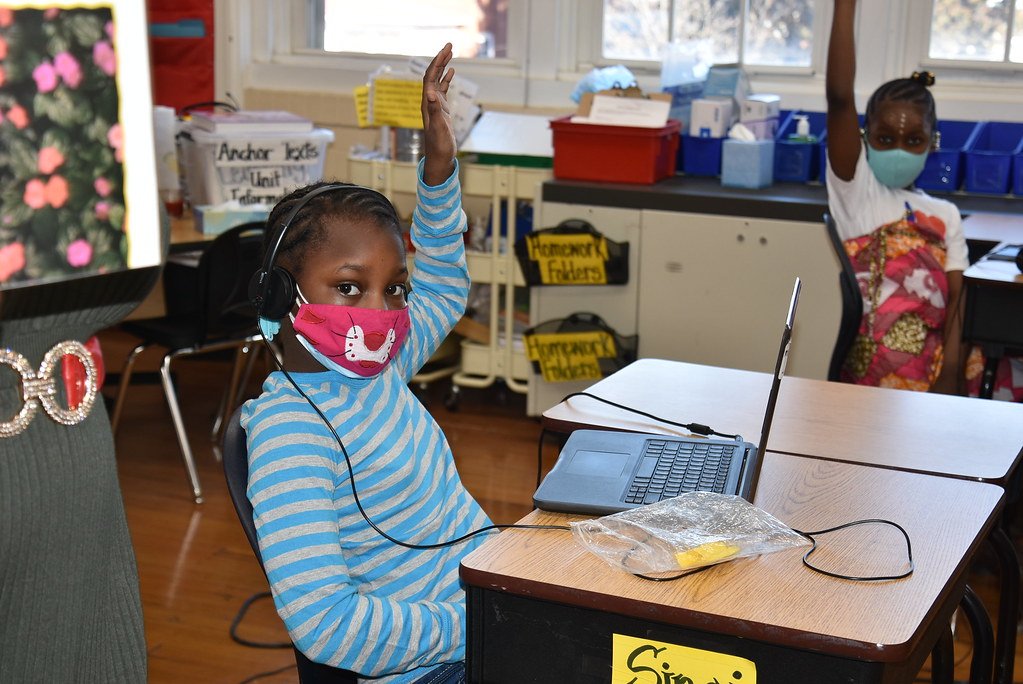DC Must Act to Support Our Most Vulnerable Students
In November 2021, EmpowerK12 published a comprehensive report looking at academic growth and achievement of students from across the District, finding disproportionately larger amounts of unfinished learning for students designated as at-risk in math and reading.
Our Student Wellbeing surveys from 2020-21 found that our most vulnerable student populations were sadder, more stressed by life circumstances, and more worried about COVID than their peers.
We graciously received new academic and social-emotional data from DC Public Schools and public charter schools from the recent winter assessment window. This blog post serves as an interim update ahead of the D.C. Council’s education budget hearing next week with a full brief releasing soon.
We hope this information will guide policymakers as they provide schools with funding so they can better serve DC’s most vulnerable students.
Impact on Vulnerable Students’ Wellbeing
Our second semester Wellbeing survey window is open until Spring Break. So far, more than 1,200 students in grades 3-8 at public charter schools across the city have anonymously responded to questions about their academic, social-emotional, and physical health. We ask students whether they always have enough food available at home, live in a safe neighborhood, and if their home situation is permanent or stable. Then, we identify students who are more vulnerable to trauma and stress (thus far, nearly four in 10 respondents) because they responded negatively to any one of the three questions, and further identify the most vulnerable students (8%) who respond negatively to two or more questions.
Students who are vulnerable to chronic stress and trauma demonstrate significantly lower overall Wellbeing Index scores, a composite measure inclusive of key academic, social-emotional, and physical wellbeing components.
What contributes to the lower Wellbeing Index scores for these students?
Vulnerable students are more likely to have experienced the loss of an adult they care about since the school year began and more likely to feel physically unsafe just getting to and from school. Additionally, vulnerable students are less likely to feel happy most or every day, get enough sleep, eat healthy foods, and feel that attending school every day of the week is mostly or very important.
How does chronic stress and trauma impact vulnerable students’ academic progress?
Responses to hardship questions like food availability, home stability, and loss of adults in their lives are highly correlate with responses to trust and feelings, as well as academic success questions. Findings from the survey follow the latest brain science research about the impact of trauma on the brain’s neuroplasticity and its ability to adjust activities in response to new situations. When individuals are subject to intense, frequent, and/or chronic stress, the body reacts by over-producing biochemicals that impact brain and body development, particularly for growing children but also for adults. This is why we care deeply about wellbeing and identifying sources of stress for our students and educators.
Vulnerable students report they feel less equipped to deal with their stress, which makes sense given the chronic and often severe nature of the situations they face.
Trauma’s impact on social-emotional outcomes for students eventually leads to negative consequences in academics. The correlation is evident within our survey, where we find a strong connection between students’ self-reported grades and their holistic Wellbeing Index score and the degree to which vulnerable students feel they will be successful in school.
Altogether, vulnerable students, frequently those who are designated as at-risk, are disproportionately exposed to stressful life events, requiring more mental health supports to address their concerns.
We support the mayor’s additional $3.8 million investment in school-based mental health programming in the FY23 budget as one equitable funding solution that helps distribute services to where they are most needed.
Impact on Vulnerable Students’ Achievement
Our November unfinished learning report showed, on average, students across grades K-8 ended the 2020-21 school year with lower math and reading achievement compared to pre-pandemic. We found an average 9 percentile point drop for all sample students in English Language Arts (ELA) and 10-point decline in math. Students designated as at-risk demonstrated larger drops in ELA and math percentile rank (14 and 13 percentile points, respectively) compared to the peers who are not considered at-risk (5 and 8 percentile points). Spring achievement declines were larger for Black and Latino/a learners compared to their Asian American and White peers.
Participating LEAs shared their winter computer-adaptive formative assessment data from NWEA MAP and iReady to help us understand how students are performing two years into the pandemic.
The chart below shows that DC students designated as at-risk declined an average of 11.3 percentile points in math and reading, compared to 5.7 percentile point drop for their peers who are not at-risk. Black students’ average percentile rank went down 10.5 percentile points, while White students declined just 1.7 percentile points. The differences are stark — White students are, on average, at the 72nd percentile, while Black students are now at the 26th percentile. At-risk students are at the 22nd percentile.
How has student achievement changed over the course of the pandemic?
We compared student growth trajectories of DC’s most vulnerable students to less vulnerable students across the city and national pre-pandemic averages.
We find that reading scores were relatively unimpacted at the very beginning of the pandemic but fell off during the remote 2020-21 school year. Math scores dropped significantly last fall and showed slight improvement in spring, particularly as some students returned for in-person learning opportunities. Fall-to-winter growth this year was closer to, but still slightly below, pre-pandemic norms, a significant improvement from the remote year.
Change in Scale Scores since 2018-19
Change in National Percentile Rank since 2018-19
* Spring 2019-20 was the start of the COVID-19 pandemic when very few students tested. Then, in fall 2020-21, we noted in our original unfinished learning study that lower performing students were less likely to complete their baseline test.
DC’s most vulnerable students, those designated at-risk, have fallen one additional grade level behind expectations since the start of the pandemic. On average, students designated as at-risk are earning MAP and iReady scores this winter similar to the national average from two grades prior pre-pandemic.
For example, this year’s 4th graders designated as at-risk have average math scores that are about the same as the national average for 2nd graders in winter pre-pandemic. It is hard, even for our best 4th grade teachers, to modify lesson plans to teach two-digit multiplication, when many students still struggle with carrying and borrowing for two-digit addition and subtraction.
The sector needs to have tough conversations about grade level promotion over the next year and discussion of possible innovative solutions that address this particular challenge.
Recommendations for the FY23 Budget
All the academic and social-emotional wellbeing data suggest that DC’s most vulnerable students have been the most impacted by the pandemic. We are grateful that the mayor proposed a historic 5.9% increase to the base UPSFF rate. But this increase will not enable schools to equitably serve at-risk students.
Schools serving higher percentages of at-risk students, at least 30% of the student population, need a plan to equitably fund the level of recovery their students deserve. We recommend three actions the Council can take via the budget support act:
The Council and Deputy Mayor for Education should commission an updated funding adequacy study, as it has been nearly 10 years since the last one, and we have yet to fully implement any of the recommendations in the last decade.
Sign into law a commitment to fully fund the recommendations for students designated as at-risk by FY25, the same year as a potential fiscal cliff due to the expiration of federal pandemic recovery dollars.
Increase the current at-risk weight from 0.24 to 0.28 for next school year (in 2013, the recommendation was a 0.37 weight).
Image courtesy DC Public Schools’ Flicker Photostream












